BIPOC-led philanthropy is leading the way to transform giving, invest where it matters, and respond to the ever-changing landscape of pro-democracy funding, Democracy Fund’s Lauren Hill explains for Candid.
Topic: Diversity, Equity, and Inclusion
A Multiracial Democracy Includes BAMEMSA Communities
Democracy Fund invests in the power of communities of color. We have long included BAMEMSA communities (Black, African, Arab, Middle Eastern, Muslim, and South Asian) in our approach to strengthen and expand the pro-democracy movement and undermine those who threaten the ideals of an inclusive multiracial democracy in the United States. Our work is grounded in the belief that we must recognize BAMEMSA communities’ full humanity and inclusion in the democracy of our dreams with no tolerance for dehumanization, hate-based discourse, or violence.
Our early funding of these communities began in 2016 in response to fear mongering and hate crimes that were on the rise in the United States. We stood up a special project in 2017 as policies like the Muslim Ban and the separation of families seeking asylum at the border were initiated by the federal government. We more recently expanded this work into our Just & Inclusive Society program, which seeks to support the safety, self-determination, and dignity of marginalized groups in the United States through a shift from providing direct services, to building capacity, power, and momentum across communities. In 2018, we also began focusing on reparations and rights for BAMEMSA communities in online spaces. Our Digital Democracy portfolio works to bring about a digital public square that is free of algorithmic discrimination, harm, and bias. We envision a world where communities can create, access, and enjoy media and technology that represents their needs, concerns, and dreams.
As the violence in Israel and Palestine continues to reverberate globally, dehumanizing and racist narratives are fueling Islamophobia, anti-Arab and anti-Palestinian racism, and anti-Semitism here in the United States. Many Americans are fearful for the safety of their communities. In particular, we have witnessed horrific violence especially against Palestinian Americans alongside dramatic increases in reported threats against both Muslim and Jewish Americans.
Democracy Fund has been proud to support efforts to end political violence, whose flames are often fanned by mis- and disinformation. The intersection of these forces — threats of political violence amplified by mis- and disinformation and rising Islamophobia — present particular risks to BAMEMSA communities, which must be fully included in the multiracial democracy we seek.
The commitment and investment BAMEMSA communities have shown to America has been historically unrecognized. BAMEMSA communities are an integral part of the inclusive multiracial democracy we strive for, and their efforts should be recognized and respected by government and philanthropy. We have been particularly concerned over the past several months as we have heard reports from grantees about feeling isolated and under attack. In this moment, we believe it is particularly important to affirm our continued support for the critical work that these organizations undertake.
We are proud to continue to support our grantee partners, who stand for human dignity, civil and human rights in person and online, and the rights of BAMEMSA communities to thrive in this country. As public discourse evolves this year and beyond, we can’t lose sight of the core idea that a truly just multiracial democracy — and society — must include BAMEMSA communities.
Democracy Fund continues to support and fund these organizations. They are relying on us to meet this moment with them and to not back away from threats to our vision of an inclusive multiracial democracy. We are proud of our longstanding support for organizations working in BAMEMSA communities, who have experienced inequality, marginalization, targeting, and other forms of identity-based discrimination. Our grantees’ work is essential to our democracy. Unfortunately, this work as a whole was significantly underfunded back in 2016, and it remains underfunded in 2024.
Today, we reaffirm our support for BAMEMSA communities and urge other funders, civil society organizations, and leaders to do so as well. The future of our democracy depends on it.
Language Access for Voters Summit 2021
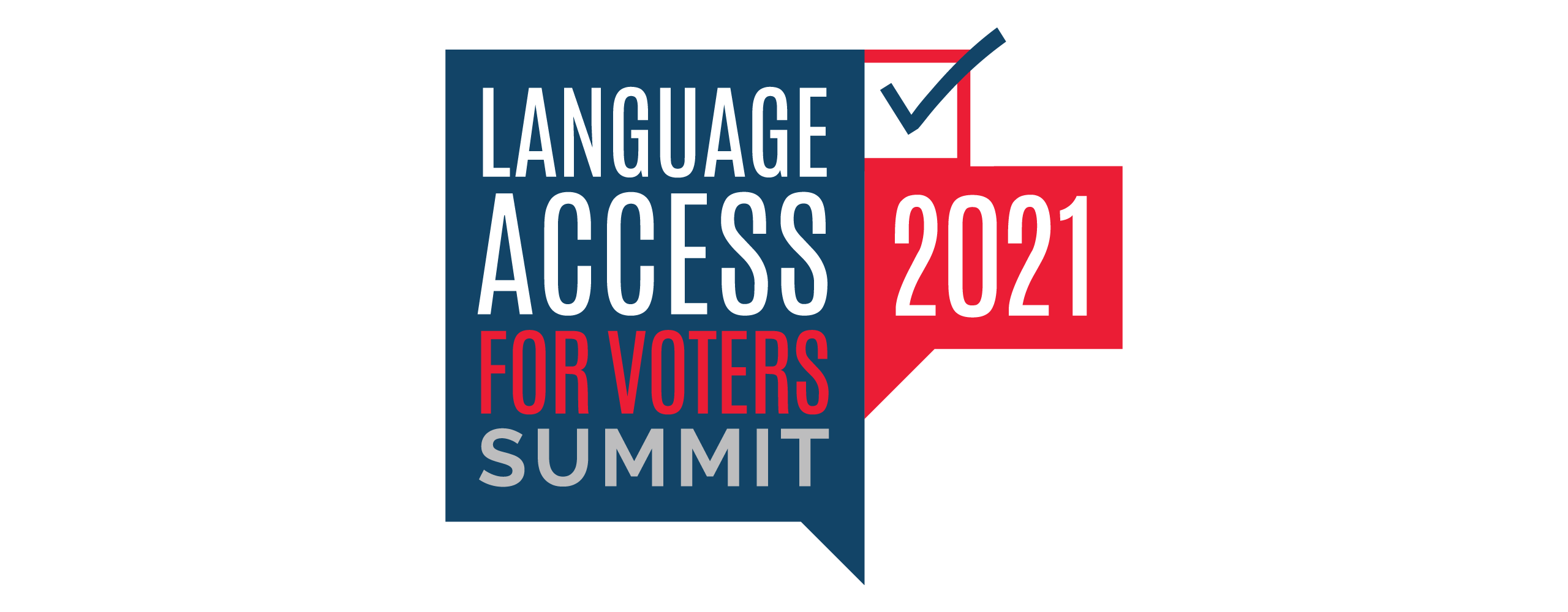
Removing Language Barriers from the Voting Process
Democracy Fund’s Language Access for Voters Summit is an annual event that aims to remove language barriers from the voting process. The 2021 convening was held Dec. 13-14, 2021, following the Dec. 8th release of the Census Bureau’s new Section 203 language determinations under the Voting Rights Act—which provide language assistance in U.S. elections.
To help election officials navigate and implement the necessary changes, the agenda included discussions with local, state and federal election officials, voting rights advocates, and translation experts. Participants shared pragmatic ideas, tools, and best practices for providing language assistance—focusing officials’ immediate needs in the lead-up to the 2022 midterm elections.
Celebrating the Diversity of Languages in the United States
The two-day event featured a collection of speaker-submitted videos in Armenian, Bengali, Dine’ (Navajo), English, Korean, Mandarin, Spanish, and Yup’ik. These represent a small sample of the languages election officials provide voter assistance for across the United States.
Speakers read the 2020 Presidential Election ballot in various languages from their jurisdictions, highlighted the critical value of language and culture integration in formal settings like polling places, and shared personal stories of how language access has played a role in their own life or someone they love.
The topics, presentations, materials and resources for each day of the Dec. 2021 summit can be viewed and downloaded below.How journalism funders can move past the pipeline myth

- Table of Contents
- Intro
- Pipeline Myth
- Newsroom Culture
- Power Building
Journalists of color make up less than 17 percent of newsroom staff, and account for just 13 percent of newsroom leadership. Why are these numbers still so low? And what is our responsibility as funders?
As we’ve said before, there are serious inequities that need to be addressed to create a culture of journalism that helps people meaningfully participate in our democracy. One of the most persistent is this lack of diversity in newsrooms. This is a problem because newsrooms that do not reflect their communities are not able to serve their communities. Full stop.
So what’s going on? The leadership of majority-white newsrooms still latches onto the myth that there’s a pipeline problem — blaming the lack of diversity on a lack of job candidates. But past research has shown that graduates of color are hired by newsrooms at lower rates than their white counterparts, while a recent survey shows a disturbing trend of mostly mid-career, Black women exiting the industry. Namely, the candidates are there, but newsroom leadership is failing to hire and retain them. Let’s dig into why this pipeline myth is so persistently harmful, what’s really happening, and what funders can do.
A look under the hood of the pipeline myth
Basically, what’s happening is that some newsroom leaders are relying on exclusionary recruiting efforts, such as:
- Prioritizing applicants from elite journalism schools that are often alienating institutions themselves
- Trying to attract talent via unpaid internships that are prohibitive for professionals from low-income backgrounds
- Calling on their existing networks that reflect and replicate the same inequities
When instead they could be lifting barriers by:
- Looking beyond top-ranked journalism schools (or even college degrees!)
- Shifting recruiting efforts to focus on the talent found inside groups like the Asian American Journalists Association, National Association of Black Journalists, National Association of Hispanic Journalists, National Lesbian and Gay Journalists Association, Native American Journalists Association, South Asian Journalists Association – by building authentic relationships, not just reaching out when newsrooms want to circulate a job posting.
- Hacking the hiring process.
But the real myth of the “pipeline problem” is that diversifying newsrooms is all about hiring. It’s not. It’s also about building an inclusive culture that supports the growth and leadership of journalists from all backgrounds.
The deeper issue: newsroom culture
For years, journalists of color have been sounding the alarm on an industry that consistently undermines their lived experiences, excludes them from leadership roles, and pushes them out when they dare to push back.
Last summer, when Black reporters spoke up about the emotional trauma of covering the killings of Black men and women, editors responded by disqualifying them from being objective. They failed to provide them with the support that covering these traumatic stories require. And still, many Black journalists bore the burden of reporting on civil unrest and racism in this country in newsrooms that lacked a deep understanding of racism. Journalists of color, and specifically Black women in journalism, are disproportionately targets of the worst online abuse and harassment when covering these issues. These stories made front pages and headlines, but they came at a steep personal and professional cost.
These issues contribute to hostile environments for journalists from marginalized communities, who are expected to leave their identities at the door until they’re forced to educate their colleagues on issues that hit close to home.
There are many things that newsrooms can do to create a more inclusive environment — from turning to guidance from groups like Journalists of Color on Slack and the Journalists of Color Resource Guide that offer a community for minorities to access support and resources that help them navigate the field, to engaging in difficult conversations about media industry biases that hinder journalists of color. One of these is the myth of “objectivity”, which is rooted in the lens of white men and largely ignores the perspectives and expertise of Black and brown reporters.
As funders, it is our responsibility to follow the lead of these reporters. It is critical that we center the experiences of those most frequently and deeply marginalized within their newsrooms and journalism in our grantmaking practices. We must ensure our investments are not propping up harmful institutions with bandaid solutions, and instead supporting genuine, radical change.
Funding power building is key
If you’re going to fund efforts around increasing newsroom diversity and building more inclusive newsrooms, you must also invest in the power building and sharing efforts that journalists of color are leading. This means funding programs who address retention, mentorship, promotion, leadership, safety, and community building for journalists of color. This is the only way to move from surface-level representation to centering equity and justice in journalism.
Some organizations we currently fund that seek to build and share power with traditionally excluded journalists include:
- The Ida B. Wells Society, an organization dedicated to increasing and retaining journalists of color in investigative reporting.
- Press On, a Southern media collective that catalyzes change and advances justice through the practice of movement journalism through solidarity with oppressed communities that birth social movements.
- OpenNews, a community of journalism peers strengthening relationships across organizations to build a more equitable future for journalism.
- Free Press, whose Media 2070 team is inviting all of us to reimagine the future of journalism with reparations and justice.
Talented job candidates from Historically Black Colleges and Universities, Hispanic Serving Institutions, Tribal Colleges and Universities, and women’s colleges across the country are ready to launch their journalism careers. Funding these organizations will provide support to journalists of color to stay in the industry long enough to build power: become editorial decision makers, become hiring managers, and mentor new staff. They are building the structures, culture, and practice that will help become the next generation of newsroom leaders.
There’s a Crack in the Foundation
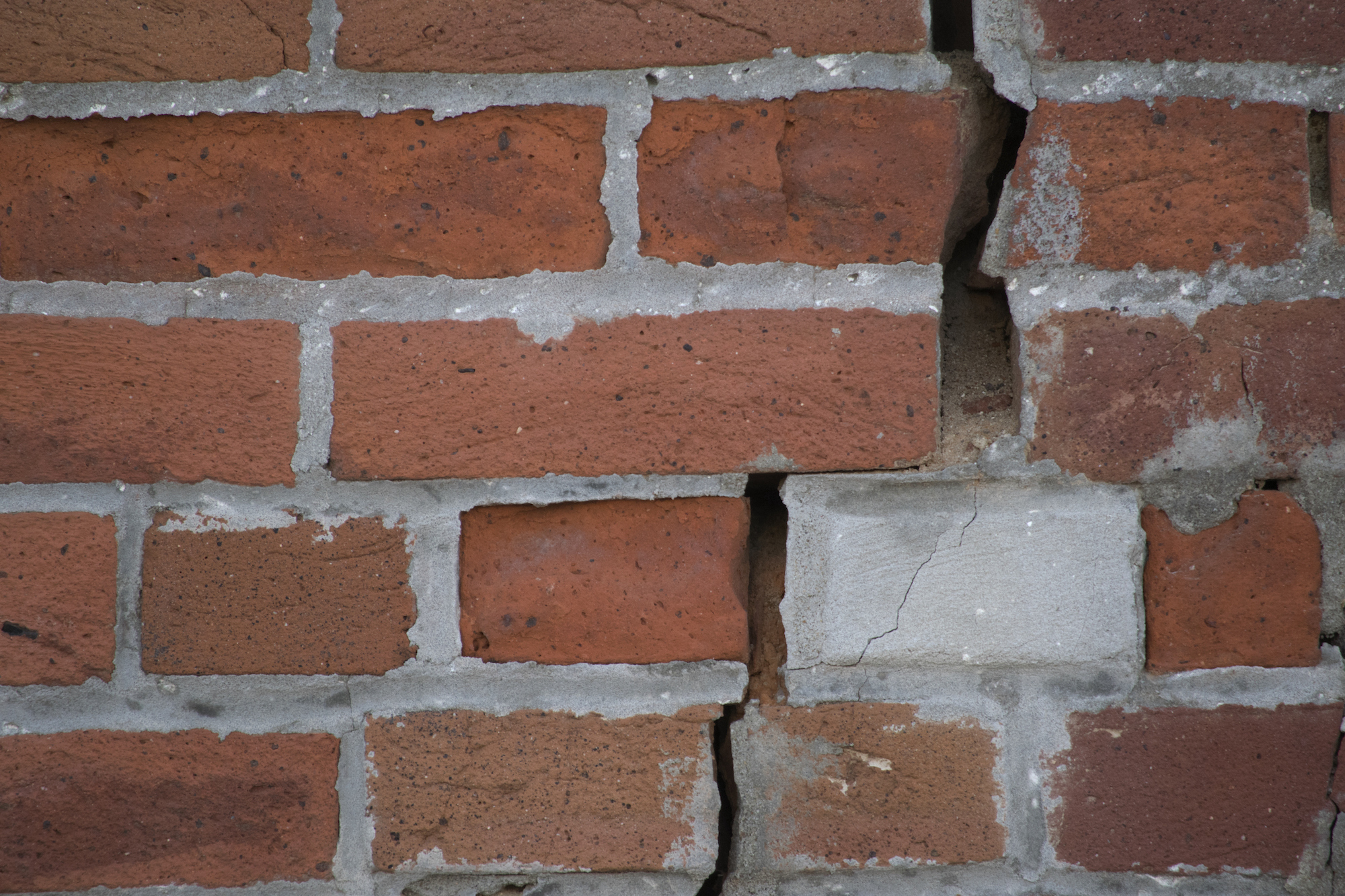
As the United States continues to reckon with the crack in its foundation, the legacy of slavery, our institutions are making small steps to finally recognize Juneteenth — commemorating the day enslaved Black people in Galveston, Texas learned of their freedom on June 19, 1865.
Yesterday, the president signed historic legislation to establish Juneteenth as a U.S. federal holiday. While the action signals a step forward as a nation, it is also a stark reminder of how far our country still has to go. Just as the journey to a perfect union doesn’t end with one verdict, a national holiday does not absolve the nation of its relationship with white supremacy.
Six months after the first Black and South Asian woman was confirmed as vice president of the United States, the right to vote remains threatened, and yet Black people are still called on to fight for democratic institutions that often don’t protect us — a bitter irony when we are historically our democracy’s strongest champions.
To be clear: symbolism is important. National recognition of Juneteenth and the celebration of its significance provide the chance to learn and discuss these difficult truths about our shared past. This weekend should absolutely be filled with events that celebrate Black culture — and shout out to that extra day off!
But imagine a world where the symbolism of a national holiday is coupled with equitable rights and a clear pro-democracy agenda. Imagine it, and use the image it conjures as motivation in the ongoing journey towards achieving that reality. Let’s call out policies that claim to secure elections but are designed to prevent Black people from making their voices heard. Let’s create and implement new reforms that foster diversity, equity, and inclusion — ones that build power and bring about racial and economic justice.
And as my dear friend LaTasha Brown of Black Voters Matter said, “This isn’t just a policy fight. We are fighting a culture of oppression.” We cannot take our foot off the gas. Instead, despite everything, we must double down.
Our democracy remains at risk until we fully reckon with the forces of systemic racism that boldly try to suppress Black voter participation while masking it with performative actions. We must stop the efforts to disenfranchise Black people or we will never achieve a healthy, open and just democracy. My grandmother often said, “baby. don’t get weary in well-doing.” These words resonate with this moment, and serve as a reminder that now is not the time to let weariness overcome the drive of good work.
America, there’s a crack in our foundation. Are we ready to rebuild?
Holding Ourselves Accountable: How Democracy Fund is Supporting Media Equity Now
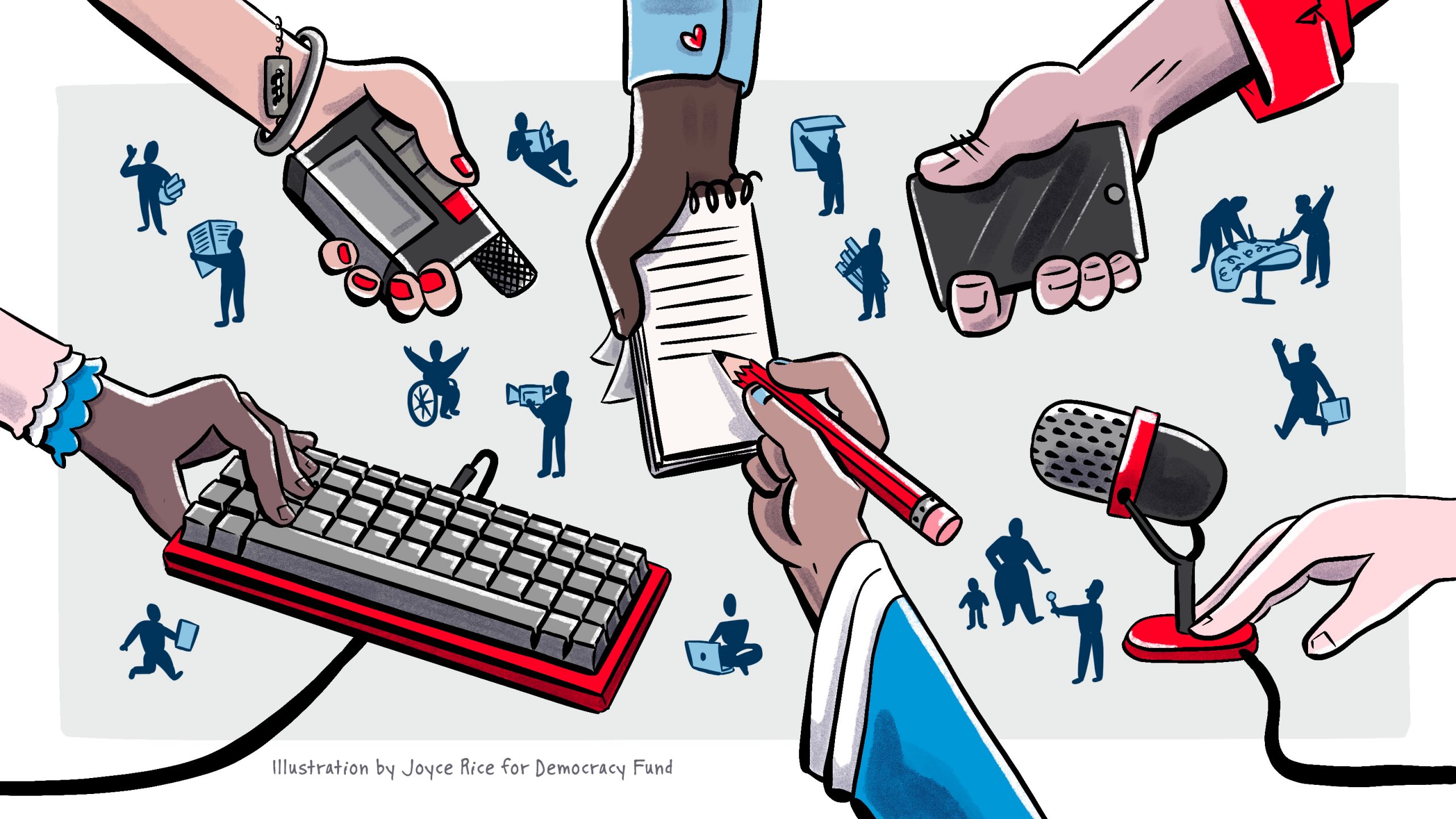
Last year, we published “Dear Funders: What Does it Mean to Care About Equity in Journalism?” where we outlined three priorities for foundations seeking to support equitable journalism: investing in journalism created for and by people of color; supporting groups that are building a more equitable industry overall; and closing the resource gaps that philanthropy has helped perpetuate.
This piece went up at the start of one of the most tumultuous times in our country’s history: the rise of COVID-19 and marches for racial justice in the wake of George Floyd’s murder. White-centric and led media struggled to tell these stories from the lens of communities of color, while pushing out reporters of color who were.
Following this surge, an unprecedented amount of philanthropic dollars went towards racial equity, as many newsrooms began to grapple with their histories of racism. But it’s now one year later and many funders still struggle to center POC-led organizations, while real progress on equity within newsrooms has yet to materialize.
Righting these wrongs will take incredible amounts of time and money from the field of philanthropy. But doing this work gives us energy and brings us joy. We’re investing in the incredible efforts of leaders of color that are shaping the future of journalism, and we hope you’ll join us.
Here are some of the things we have been doing:
In 2020, we increased investments to several partner organizations, including an additional $500,000 to the Racial Equity in Journalism Fund to ensure dollars could go directly to POC-led and serving newsrooms and to address the legal needs of journalists of color. We also provided an additional $100,000 to the Center for Community Media at CUNY to help ensure their media partners across the country had access to critical training and resources.
We increased the flexibility of our grant structures, like removing annual audit requirements, providing more mediums for annual reporting, and moving project grants to general operating (excluding grants with fiscal sponsors or agents). And we committed ourselves to using public platforms, as well as industry events like Media Impact Funders, the United Philanthropy Forum, and Council of New Jersey Grantmakers to highlight mediamakers of color and push our peers to increase their support of them.
And our team is continuing this work in 2021. We’ve committed over $1.5 million dollars to grant amendments and renewals to organizations like the Maynard Institute, Emma Bowen Foundation, and the Asian American Journalists Association, all of which support the growth and leadership of journalists of color while holding the journalism industry accountable for more fair and representative coverage. We’ve also renamed our portfolio “Equitable Journalism” to better reflect our funding priorities and guide future strategy.
We know this is just the beginning. The violent racism that communities of color have experienced during the COVID-19 pandemic is nothing new. Journalism has too often historically contributed to propping up racialized violence and harms, and philanthropy has persistently underinvested in journalism led by and serving POC communities or divested altogether. We don’t want to continue this legacy of harmful funding practices, and we hope you don’t either. We are collaborating more intentionally across our media grantmaking strategies to ensure equity is at the forefront. And Democracy Fund is working to infuse racial equity across the organization, while continuing to examine how our external grantmaking and internal culture uphold white supremacy.
We’re calling on our peer funders to join this transformative moment, and share their plans and actions so we can all learn from each other. We look forward to sharing more about how we are increasing our investments in organizations led by and serving communities of color, LGBTQ communities, and other historically marginalized groups, and continuing to work on our internal practices and culture to ensure this support is sustained.
Why we’re urging funders to support AAPI women’s leadership in journalism now
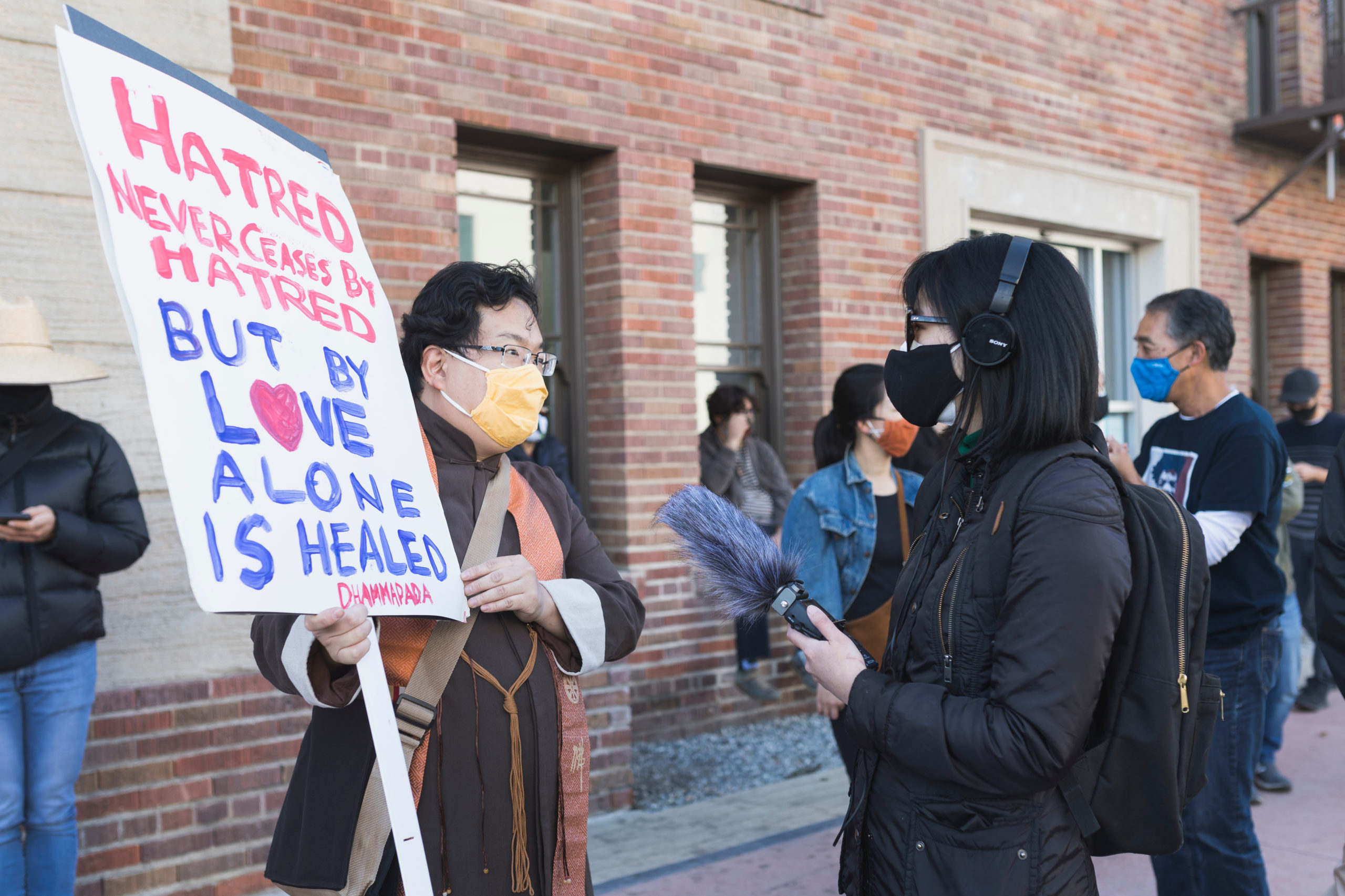
This week’s tragedy could have been avoided. For months, AAPI women in journalism have been sounding the alarm on the dramatic rise in racist and xenophobic attacks. Unfortunately, their calls were not only largely ignored by the public and policy makers, they were also minimized within their own news outlets. This historic silencing of the AAPI community, and AAPI women especially, must end.
This is why we are committed to supporting AAPI women’s leadership in journalism. AAPI journalists and media leaders have shown incredible dedication to bringing nuanced, inclusive and community-based reporting to their audiences over the last year, while risking physical, mental and emotional harm.
This week, they carried the tremendous burden of providing responsible coverage, while fearing for their own safety. They have gone to work while grieving not only the loss of life from the Atlanta attacks, but the ongoing disproportionately high rates of COVID-19 cases and fatalities affecting the AAPI community.
The work of AAPI women journalists — spanning decades and even centuries — has continuously centered AAPI communities’ experiences, perspectives and information needs. They have pushed the entire journalism industry forward by demonstrating how to center and serve those who have been historically excluded by the media. This is why we’re urging our fellow funders to join us in supporting these leaders.
The work of AAPI women journalists… has continuously centered AAPI communities’ experiences, perspectives and information needs. They have pushed the entire journalism industry forward by demonstrating how to center and serve those who have been historically excluded by the media.
At the core of much of our work in growing trusted and equitable journalism is the leadership of AAPI women. Here are just a few of the groups at the helm of this work:
- The Asian American Journalists Association, led by Executive Director Naomi Tacuyan Underwood, is a membership organization working to increase the visibility and inclusion of AAPI journalists and promote fair and accurate reporting of the AAPI community.
- The Maynard Institute, co-directed by Evelyn Hsu, develops and champions the leadership of journalists of color and drives more diverse and inclusive practices within news outlets across the industry.
- Open News brings together journalists, editors, developers, and designers to create shared processes and tech within media. Sisi Wei, their Director of Programs, leads initiatives focused on creating a more just and inclusive journalism industry, including Vision25, a new coalition with Maynard Institute and the Online News Association.
- Solidarity Journalism is an initiative led by Dr. Anita Varma at the Markkula Center for Applied Ethics at Santa Clara University dedicated to improving coverage of historically marginalized communities by centering their experiences and perspectives in reporting.
- URL Media, co-founded by Mitra Kalita, is a new, decentralized network of Black and Brown news organizations that focuses on content, distribution and other shared resources to build long-term sustainability.
Across our grantees other leaders like Anna Nirmala at the American Journalism Project, Alison Go at Chalkbeat, Anika Anand at LION Publishers, and Christina Shih at the News Revenue Hub are working to align journalism’s business model with more equitable and just coverage of communities.
The media’s historic stereotyping and exclusion of communities of color has done incredible harm. It’s time for a transformation. As funders, we must invest in the leadership of individuals and organizations doing the work to ensure fair and accurate reporting of AAPI communities. We must support their leadership not only in times of crisis — like the events of this week — but throughout our long-term strategies to build more community-driven journalism.
For those wondering where to get started, Asian Americans/Pacific Islanders in Philanthropy (AAPIP) has put together a list of resources, organizations and coalitions that foundations can invest in to support AAPI communities.
How we are holding ourselves accountable to equity in democracy and in journalism
Independent journalism is an essential instrument of accountability and critical to the health of our republic. Without it, the public’s ability to check the power and influence of those who represent them is severely limited. While our elected officials may not always appreciate or agree with the criticism they receive, it is their responsibility to support a vigorous free press.
The world of philanthropy is no different. As funders, we must hold ourselves accountable to — and be willing to be held accountable by — the communities and grantees we support. As institutions with substantial power that is derived from private wealth — and not from a democratically accountable body — we have a special responsibility to embrace transparency. We should welcome dialogue and public critique if we are committed to the best interests of the communities we serve.
At Democracy Fund, we acknowledge that — through our systems, structures, and choices — we have been complicit in upholding white supremacy. We are therefore examining our external grantmaking and internal culture to ensure that we live up to the values we want to see in our democracy. Last year, we formally moved away from our previous commitment to bipartisanship because we were unwilling to compromise on the fundamental principles of a healthy democracy. Instead, we decided that we must ground ourselves in our values, including a belief that “a just and equitable political system must eliminate structural barriers to ensure historically excluded communities have meaningful influence in our democracy.” Key to this work has been listening and being accountable to our own staff, especially women of color, who have raised these issues and helped move us forward.
Specifically, our Public Square program has interrogated what it means to support racial equity in journalism (and encouraged other funders to join us). We expanded our investment in newsrooms led by and serving historically marginalized groups (and will continue to do so). We funded Black, Indigenous and people of color led organizations holding tech platforms accountable for combatting discrimination, harassment and hate. We supported new leaders working to shift industry culture. We recognize that we have much more to do to achieve justice and a democracy that works for all.
Last year we announced a number of commitments regarding how Democracy Fund will be part of the solution. Expanding on those ideas in the field of journalism, our Public Square program is working this year to:
- Expand the proportion of grantees led by or serving BIPOC, LGBTQIA+, and other historically marginalized communities across our strategies.
- Invest in trailblazers and leadership within diverse communities who are building power and organizing for equity.
- Confront systemic racism, white supremacy, and white dominant culture when it shows up in our own processes and community.
We applaud those who have come forward with feedback for foundations in the past, often at risk to themselves and their livelihoods. We saw that last week when a public critique was published about the Knight Foundation, one of our philanthropic peers and partners in the journalism field. As the journalism community comes together this week at the Knight Media Forum (KMF), we hope it is an opportunity to talk more openly about how systems of power, wealth, and white supremacy shape philanthropy, and how we all can work towards a holistic system rooted in equity and inclusion.
Make no mistake, Democracy Fund has its own work to do. We will continue to take steps to live our values more closely and to address systemic racism within our organization and within democracy. We encourage our partners and grantees to examine how their own systems may be complicit in maintaining a culture of white supremacy and be open to the uncomfortable discussions and decisions that could follow. You can expect to hear more from us on these topics throughout this year and beyond. We welcome accountability as we do the work.
We are eager to continue the conversation. If you have feedback you can email us at info@democracyfund.org, and we also encourage people to provide anonymous feedback about Democracy Fund on Grant Advisor.
Centering Equity in Journalism during the 2020 Election — and Beyond
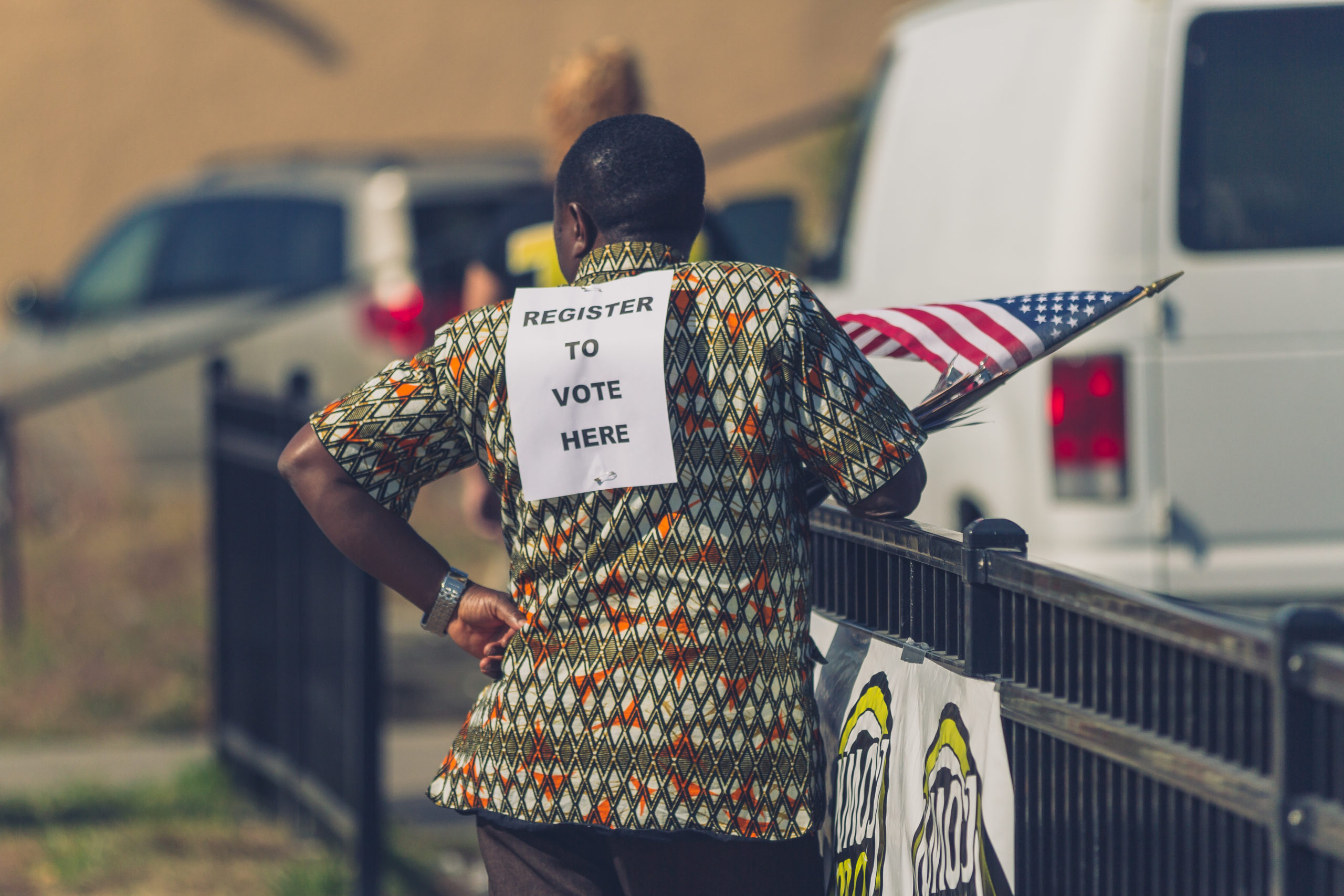
2020 was a marathon for journalists preparing for an election that seemed very likely to go off the rails. They did it while also facing unprecedented issues of safety, security, and stability in a global pandemic, a census year, and becoming increased targets for police violence. Journalists of color, Black journalists in particular, tackled all of the above while continuing to navigate systemic racism and leading a reckoning over racial justice in the industry.
In the lead-up to November and throughout election week, many of us were tuned into cable networks and refreshing news feeds around the clock, but national election coverage — predictably — failed us in many ways. As in past years, it often dealt in generalizations and erased identities. In one notable high-profile failure, CNN labeled Native Americans and presumably other unidentified voters as “something else,” rather than naming their demographics. Communities of color were also overwhelmingly targeted by misinformation.
But reporters and newsrooms around the country rose to the challenge of engaging communities, holding candidates accountable, and centering equity. If you’re a regular EJ Lab reader, it will come as no surprise that the best place to look for examples of equity-first election coverage is from newsrooms by and serving people of color. Here’s a snapshot of what these newsrooms did:
- They spoke directly to immigrant communities. Borderless Magazine, committed to more equitable immigration journalism, spoke with Rohingya Americans in Chicago about voting for the first time. Sahan Journal, dedicated to news for and about immigrants in Minnesota, reported about candidate engagement with Hmong American voters and the political diversity of their community.
- They reported information voters need. Bilingual El Tecolote published analysis by San Francisco State University students on how state propositions on the ballot would specifically impact California Latino communities. Native America Calling dug into the latest information about Native voting access for tribes across the country.
- They served their communities. Nonprofit start-up Pulso provided news, information, and perspectives to Latino voters who are often much more generalized by national media, such as how Latino voters shape candidate platforms, the significance of National Voter Registration Day, or the impact of new laws. For Spanish-language newsroom Enlace Latino NC, the story of voter education and registration didn’t end with the November election. They highlighted the impact of organizers in North Carolina whose work is ongoing.
- They exposed voter suppression. MLK50 told the story of how an ex-offender legally regained his voting rights despite major challenges in Tennessee. Sahan Journal covered how Muslim faith leaders pushed back against efforts to discourage Muslim voter turnout in Minnesota. The Lakota Times reported on state violations of the National Voter Registration Act in South Dakota.
- They sought out individual voter perspectives. Flint Beat wrote about the experience of being a 2020 Latinx voter in Michigan: including how discrimination, White House policies, and community organizing all have an impact on voter decisions. And The TRiiBE spoke with young Black Chicago voters about their ballot options and their hopes for future policy reforms.
The accomplishments above didn’t just happen by chance. They are the result of long-term commitment and relationship building between journalists of color and their communities, and they were fueled by funders who understood the urgency of 2020 and worked together to coordinate and drive resources to support capacity building, staffing, and targeted projects focused on serving communities. As we turn the corner into 2021, the urgency is still with us, and the need for more coordination, more resources and more commitment to journalists of color continues.
As we turn the corner into 2021, the urgency is still with us, and the need for more coordination, more resources and more commitment to journalists of color continues.
We have seen what we can do when we work together to drive support to these newsrooms — and it’s time to keep building momentum. Here’s what funders can do to support engaged, equitable reporting in 2021:
- Give more. Join the Racial Equity in Journalism Fund to deliver resources directly to newsrooms led by and serving communities of color. Many of the newsrooms mentioned above are grantees of the Fund.
- Make some noise. Use your communication channels to share examples of ongoing equity-first reporting. Newsrooms like The Atlanta Voice, Bridge Detroit and Wisconsin Watch, in places subject to widespread false claims of election fraud, are working around the clock to ensure ongoing accountability, and they need more support.
- Continue the work in 2021. The full story of the 2020 election — and the state of elections coverage — hasn’t yet been told. Pay attention to what worked and what didn’t. Tune in for learning and debriefs from projects like Election SOS who is analyzing how the Citizens Agenda, newsroom fellowships, Experts Network, Rapid Response Fund and other initiatives fueled more engaged, trusted, and representative election coverage.
For our part, the Engaged Journalism team at Democracy Fund will be identifying clear action steps to shift our internal structures and practices to put equity first in our grantmaking. Stay tuned for updates on how this goes in 2021.
Published with research support from Public Square Intern Areeba Shah.
How La Noticia is meeting readers where they are during COVID-19
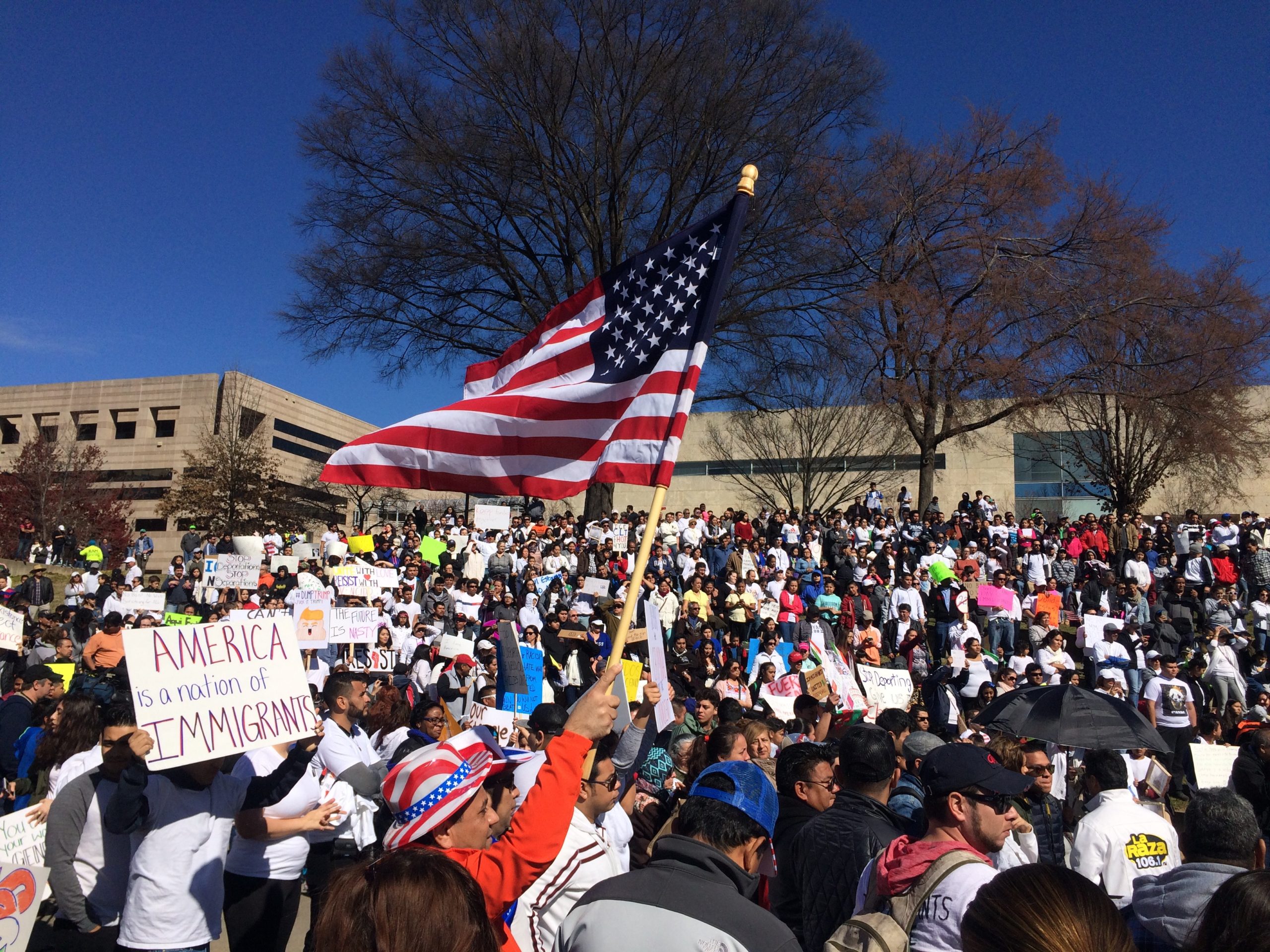
As part of our series of conversations with journalism leaders serving communities of color, I spoke with Alvaro Gurdián, Vice President of Operations at La Noticia, on how they’re adapting to COVID-19. La Noticia is a for-profit, print and digital news outlet that has served the Latino community in North Carolina for over 23 years. Alvaro and I met on the journalism conference circuit last year, and Democracy Fund proudly supports La Noticia through the Racial Equity in Journalism Fund.
Below is a lightly edited recap of our conversation.
LT: We’re now several months into COVID-19, and La Noticia has been serving communities across North Carolina since the start. What has this moment brought to light for you around the role of community media during crises?
AG: It’s only highlighted how important it is. We have readers who tell us, “I don’t know where to find food,” or “I don’t know where to find masks.” And really, that’s what we’re doing on the day-to-day. We’ll take one question and assume that if one person asks, there are probably dozens or hundreds of readers that have the same question. So we try to build content around that.
We know it resonates because we have people writing to us privately, saying, “Wow, thank you,” at a volume that we didn’t have before for things someone might consider very basic. So people are really taking to heart the value of this work. And that’s uplifting, because we’re obviously working far more hours than we were before.
LT: It’s really great that y’all have been able to continue to do this work and that folks are seeing its value. Are there any common themes coming from your readers right now?
AG: I don’t think the needs have changed that much, they’re just more pressing. Where we are, in North Carolina, Latinos have been disproportionately affected by COVID-19. So they need help. For example, the North Carolina Restaurants Association had set up a fund to help people in the industry. But there was so much need, it closed within 24 hours. So what’s the next wave? Where else can we get help?
These things are changing so fast, and social media is a firehose. It’s great if you find what you need in the moment, but how do you search for it later on? That’s been a bit of a disconnect for us. So we’ve been putting more resources on our website, newsletters, and social media so people know where to reach this information again when they need it.
LT: How else are you staying connected with readers?
AG: Believe it or not, we’ve been reaching them through print. Our advertising may have gone down, but our take-up rate has only increased. Think about it: Even if you live in a metro area, not everybody has broadband at home. Many of our readers are used to getting their Internet from work, school, church, wherever they shop. Most of those are gone completely, so they need the newspaper now more than ever. Or they have basic plans where they’ll have social media but not actual Internet. They’ll get headlines, but they don’t have the details. So our print has become much more important than before, and we know it is still a core part of our mission to inform our community through print.
Many of our readers are used to getting their Internet from work, school, church, wherever they shop. Most of those are gone completely, so they need the newspaper now more than ever.
LT: How are you balancing that tension between the continued need for print and drop in ad revenue?
AG: We try to view it all as a whole. We’re for-profit, but as long as we’re not burning cash, we’re willing to stretch a little here and make it up somewhere else. For example, events are usually big for us, but those are obviously not a thing for us right now. I think that’s a serious conversation we need to have with funders. We have readers who are disadvantaged, and it’s not enough to say, “Alright, let’s put it online.” Data plans cost money. And that’s assuming that everyone has phones and knows how to operate them. There are a lot of barriers that people don’t consider from the 40,000 foot view. So that’s part of why we’re continuing to reach out through print. Of course, our digital has gone up, but not enough to make up for the print.
LT: Keeping some of those challenges in mind, what do outlets need to do to continue serving their communities, particularly those that have been historically marginalized?
AG: Most of these outlets already know what they need to be doing. Sometimes it’s less of the “what” and more of the “how.” That could mean coaching or getting up to date on workflow automation. As I get further into this, I’m amazed at how much we were missing. We’re using new data software that does 90% of the work of posting new articles. It saves maybe five minutes, but when you have to do several stories a day, that counts.
I also think funders could focus more on bringing communities up to speed on digital — not only connecting them to the tools and technology, but training them on how to use it. People tell us, “I didn’t know I could save that story for later,” or “I don’t know how to search it for later.” I think that often goes unnoticed.
I also think funders could focus more on bringing communities up to speed on digital — not only connecting them to the tools and technology, but training them on how to use it.
LT: How do you see that as a part of media equity?
AG: Well, it’s not enough to simply put out information, whether it’s funded or not. People need to be able to access it and know how to access it. We’ll get comments saying, “I didn’t know how to get to that information,” or, “I called the number you told me but they weren’t picking up.” There are a lot of these resources we’re trying to connect them to, but they’re not always user-friendly — especially government ones. We try to condense that information, but when we refer back to them, it’s easy to get lost.
LT: As a final question, I was wondering what are some pivots you’ve made, or wish you could, to continue meeting those needs?
AG: We were already pivoting to digital, improving our website, adding a membership model. We just had to do it a lot faster than we thought we were going to be doing. Eighty-five percent of our [digital] readership is mobile, so those updates were critical. So we did that, and we launched the membership right away.
Moments like this show that if you [have the resources to] get started on this earlier, the better it is. It just so happens that we embarked on most of the things that we needed to do already. It just meant that we needed to speed up a lot of things we had already planned. We did have a plan in place, we just didn’t plan to have it in place so quickly.